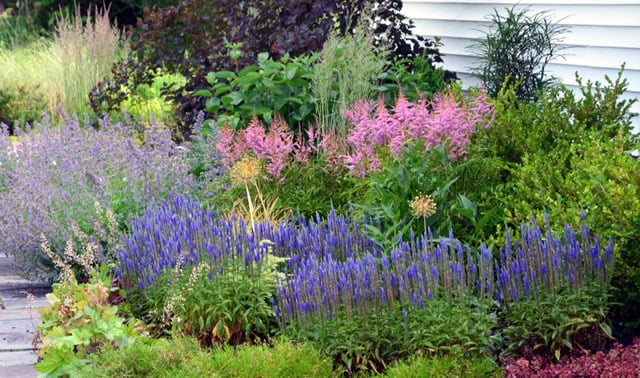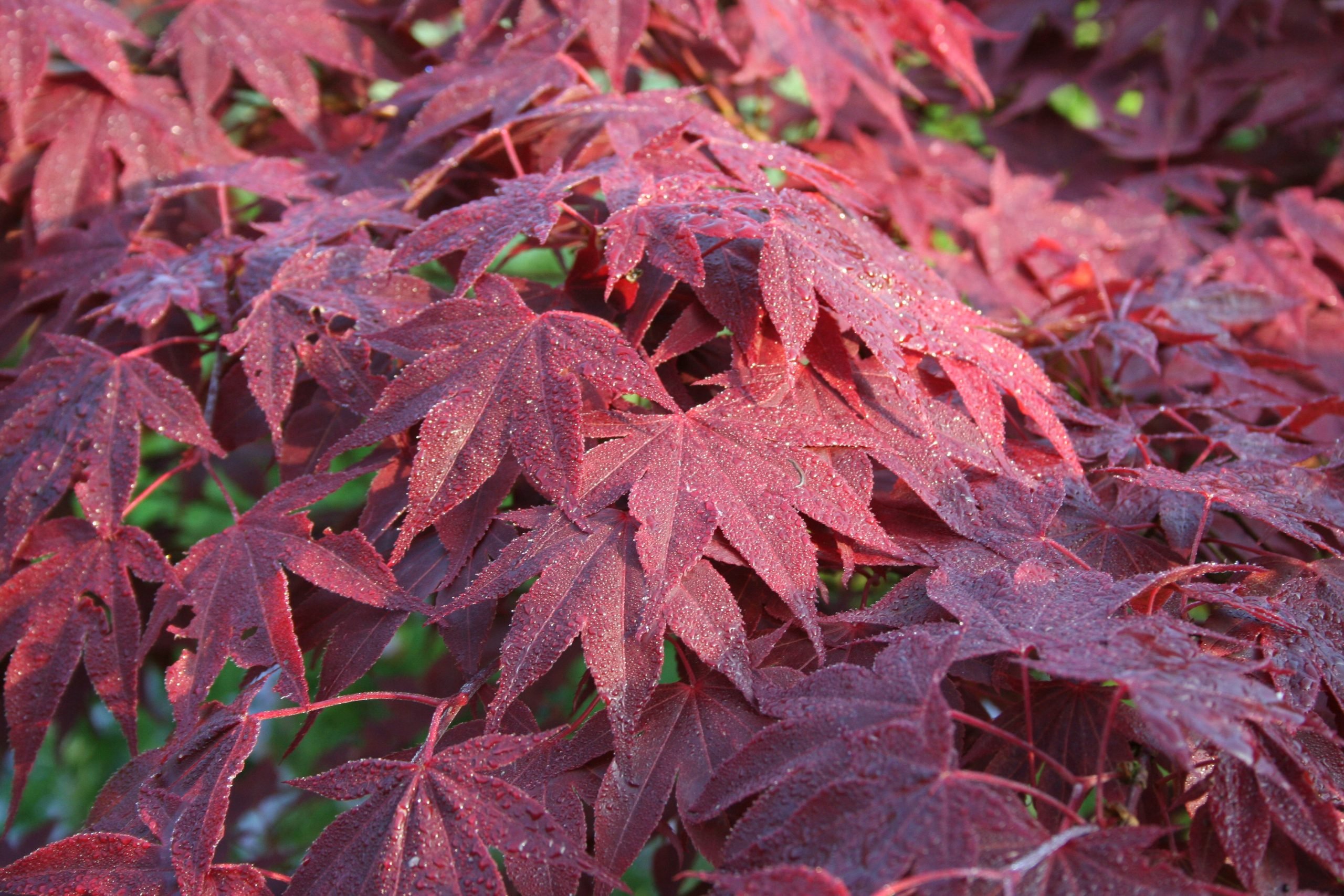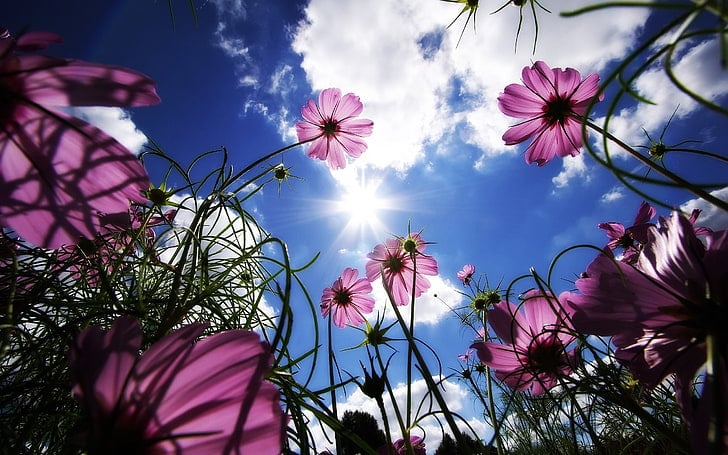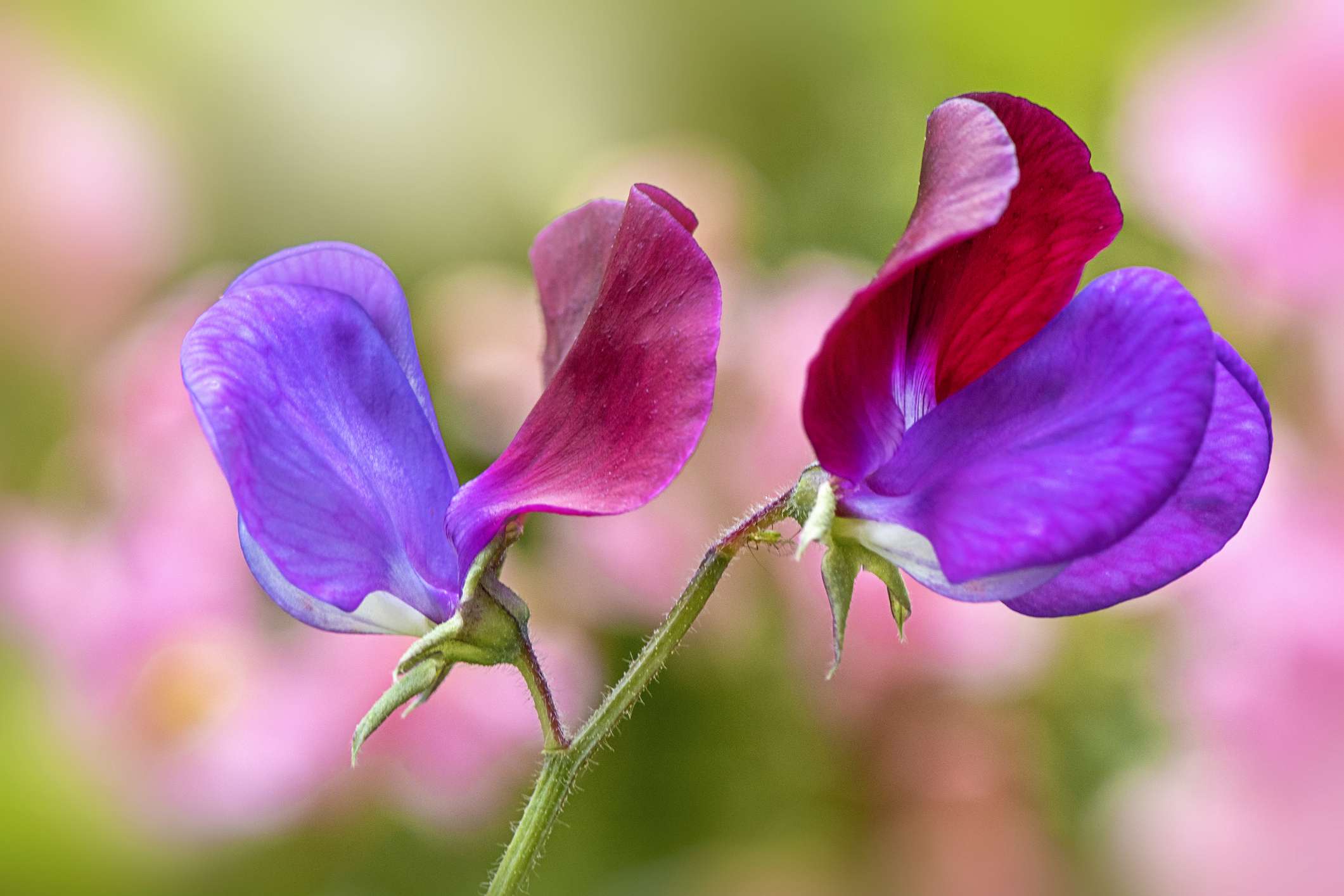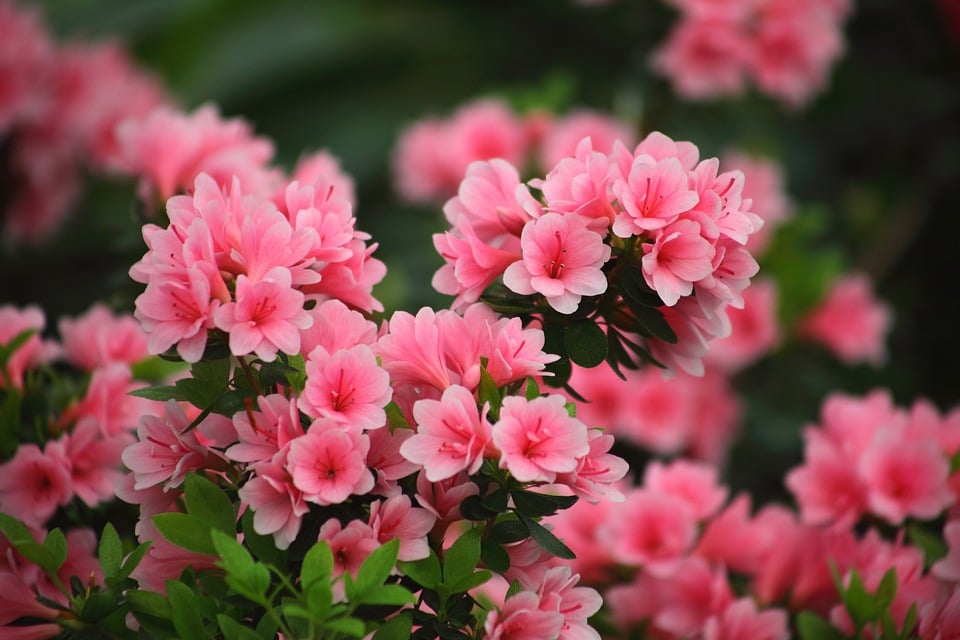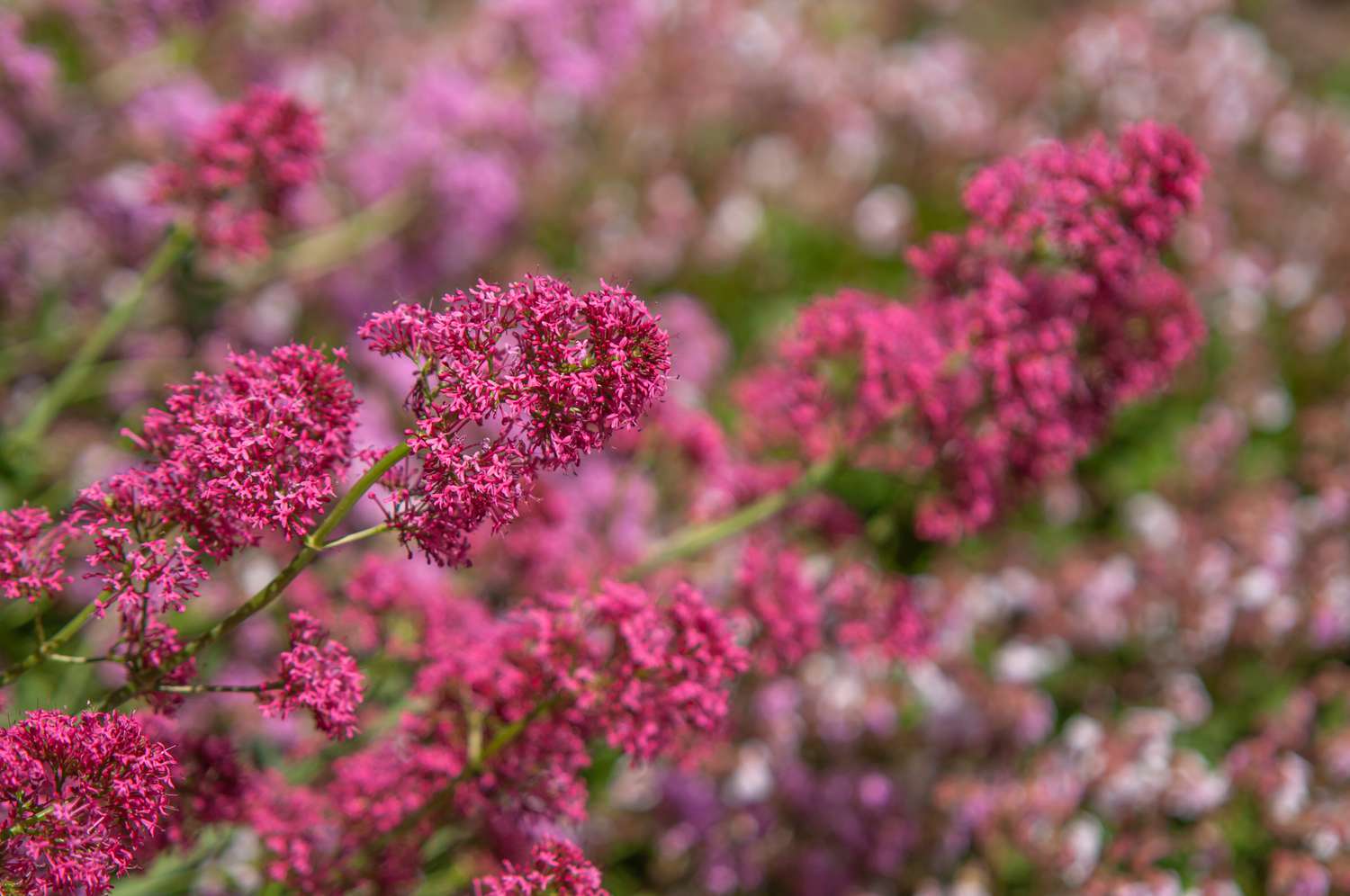10 Essential Tips for Growing Forest Flame Pieris Plants
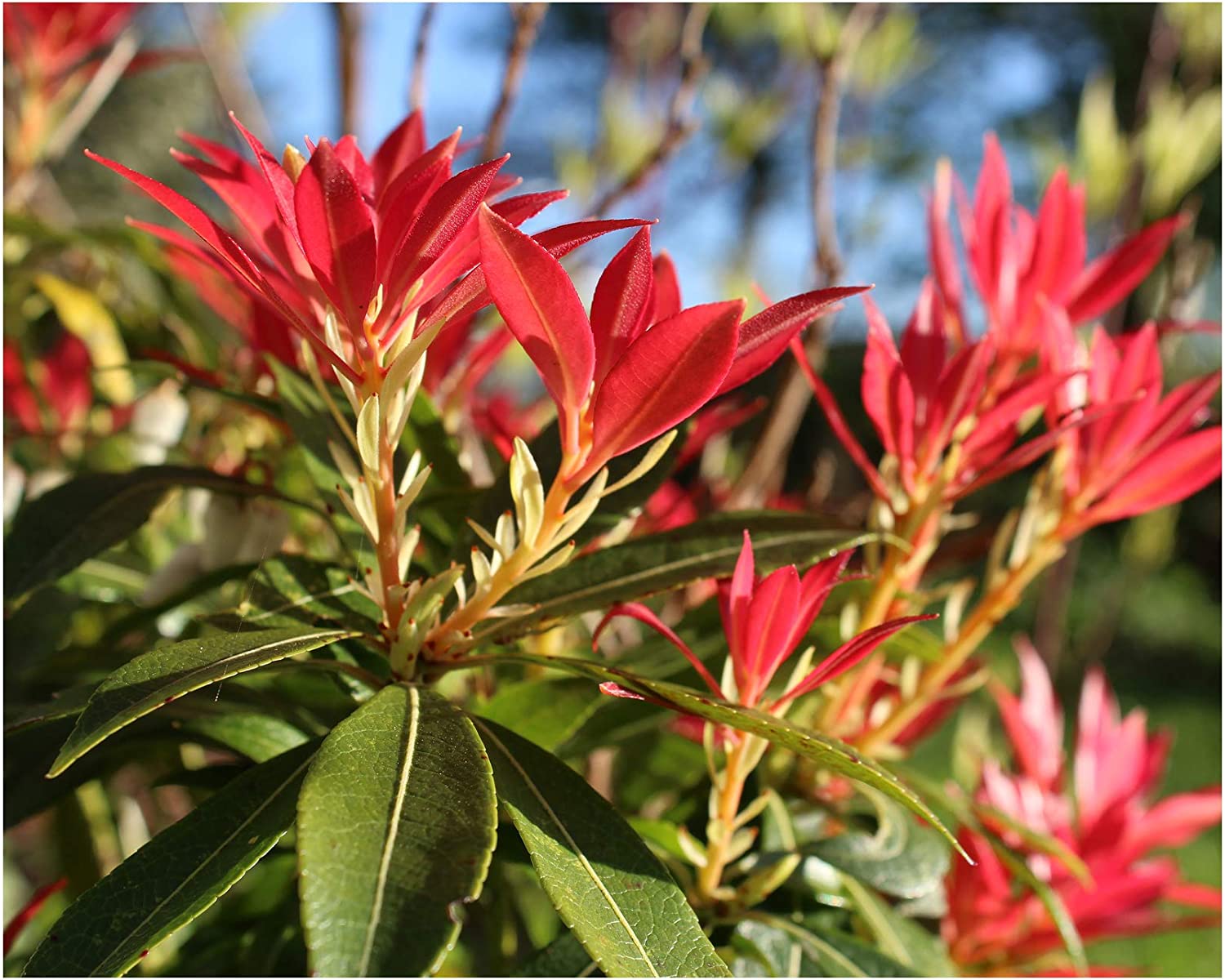
Table of Contents
Pieris (Pieris floribunda) are evergreen shrubs with leathery, dark green leaves, often brightly coloured when young. These are evergreen shrubs known for their ornamental foliage, bright red, becoming pink and cream, and finally green, and that is why this plant is called the forest flame plant! They are also called Japanese Andromeda. They bloom during spring, and small cream bell-shaped flowers can be seen in clusters on large branches.
Forest flame plants can grow up to 2.5–4 metres and can spread as wide as 1.5– 2.5 metres in 10–20 years. It grows at a slow rate and, under ideal conditions, can be expected to live for 40 years or more. If you want to know how to care for and grow this striking forest flame plant, we’ve got you covered with these top 10 tips!
Top Tips for Growing the Forest Flame Plant
1. Optimal Growing Conditions
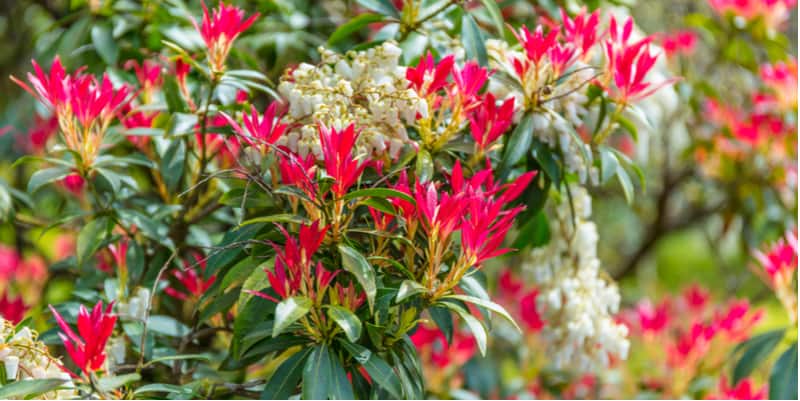
Forest flame plants are low maintenance. You need to water the plant every week or so in the beginning. After the plant has taken root comfortably, you need to water it only during dry spells. Forest flame plants grow well in acidic, moderately fertile, humus-rich soil. It is subject to chlorosis (yellowing) of the foliage in alkaline soils. They may need some protection in winter when young. Preferred soil types are loam and sand. Moist but well-drained soil is recommended. This shrub grows merrily under full sun or partial shade. South–facing or West–facing or East–facing are ideal positions for the plant. That is, any direction except North-facing is good for the plant.
2. Which Soil Conditions Do They Grow Best In
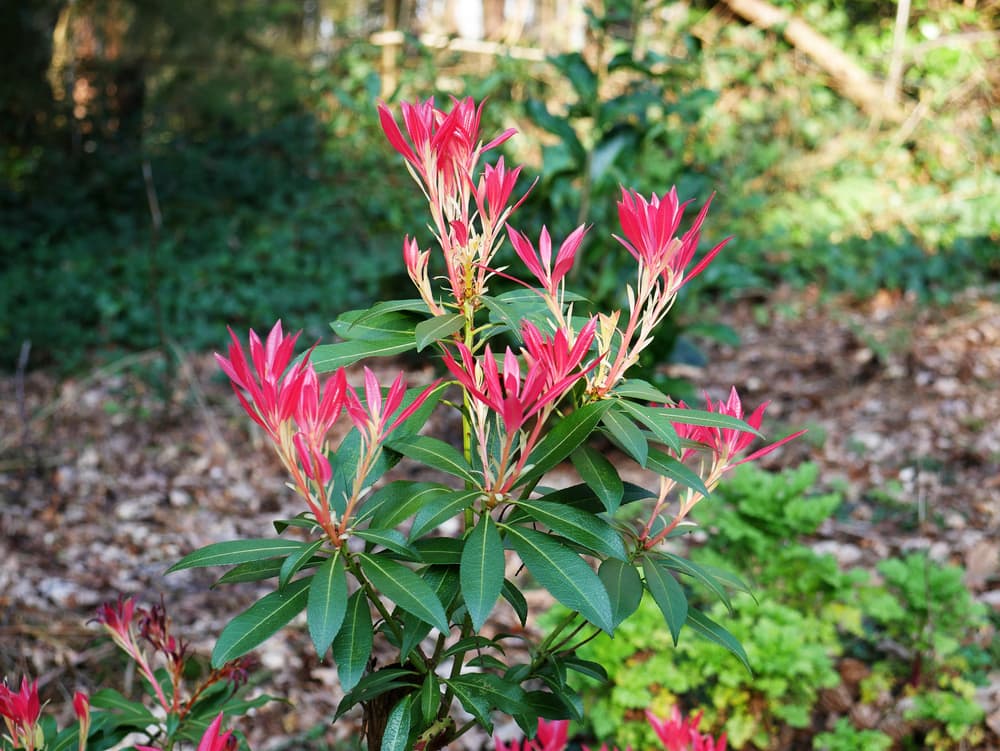
If you planted your ‘forest flame’ into soil that wasn’t strongly acidic, you might need to reduce the pH levels because forest flame plants are a bit fussy about soil conditions. This can be done by adding special fertiliser for plants that like acidic soil or by adding pine needles when giving your plant its yearly mulching. Mulch is a thick layer of compost applied around a plant to improve the quality of the soil or to stop weeds from growing.
3. Propagation: How To First Grow Forest Flame Plant
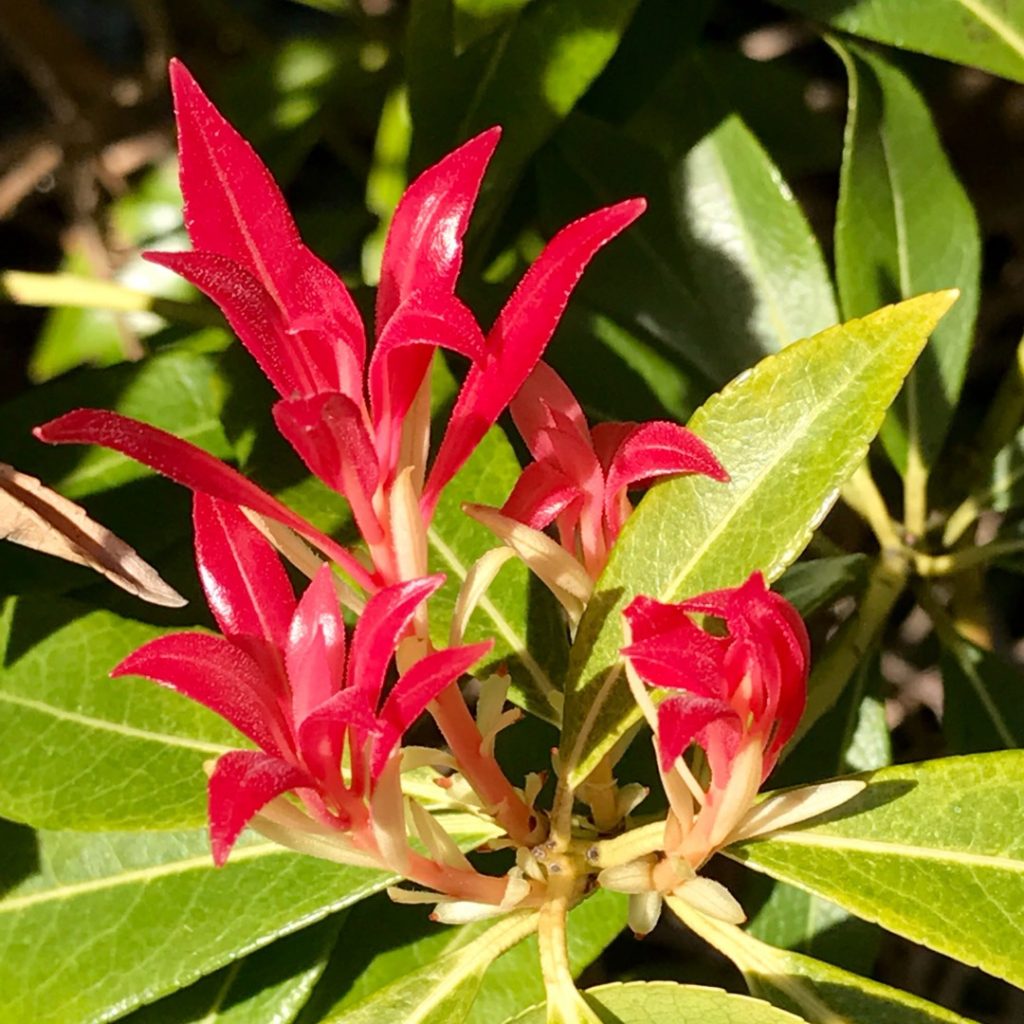
These plants are harmful if eaten. Wear gloves and other protective equipment when handling. Propagate by softwood cuttings in early summer or semi-hardwood cuttings in late summer. Some bottom heat may be required. If you’re planning to sow seeds, there is a different protocol that needs to be followed. First, you need to soak the seeds in water for about 24 hours.
Fill the pot/container that you have decided to let these plants grow in and place the seeds on top of the soil. Make sure to cover it with another thin layer of soil such that it can still be exposed to light. Cover the container with a plastic wrapper, and don’t expose it to direct sunlight. You will be able to see small happy sprouts in a month or so. Then you can remove these sprouts and plant them in a different container and let them grow into healthy plants!
4. Ideal Planting Locations Are Where They Will Thrive
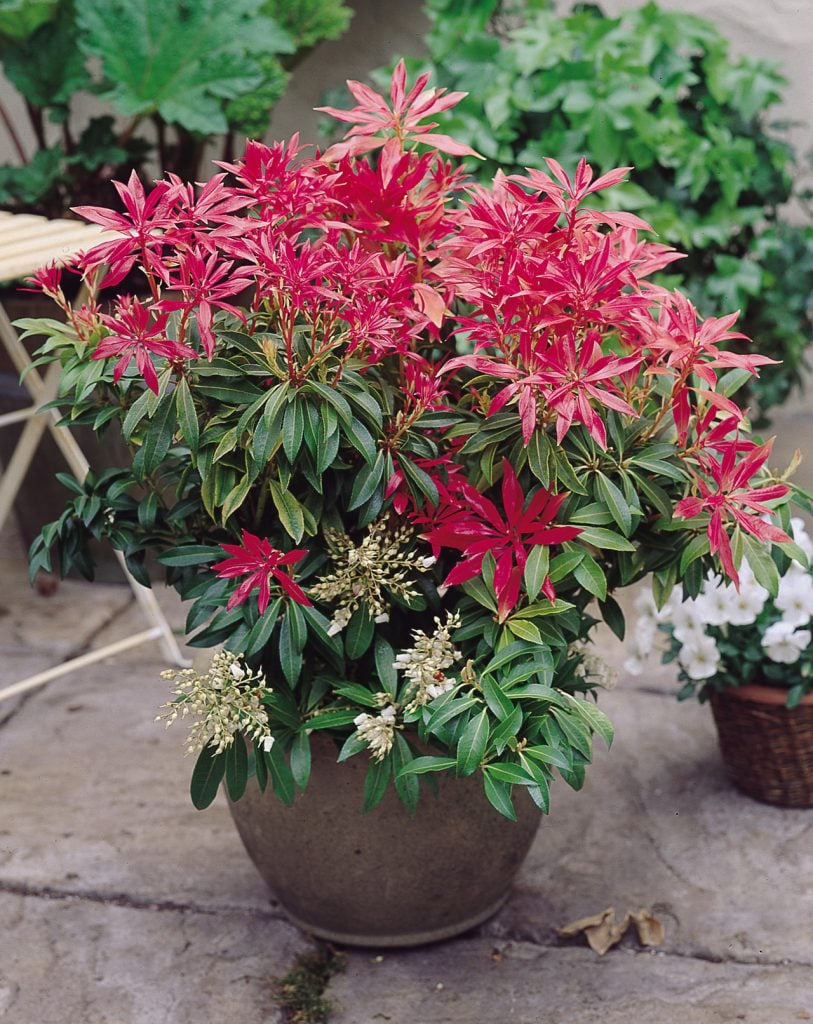
Forest flame plants can be ideally grown on your patio, and they are great candidates to be grown in compact containers too. They are usually grown in cottages, city and courtyard gardens where they thrive in flower borders and beds. In case you stay in regions that are elevated and have slopes, these plants are ideal for growing there as well, as they will preserve the soil and water. If you stay near rivers or lakes, banks might be great places for these plants to grow as they will enjoy the fertile soil in these regions.
5. Hardiness: Where in The UK Do They Grow Best?
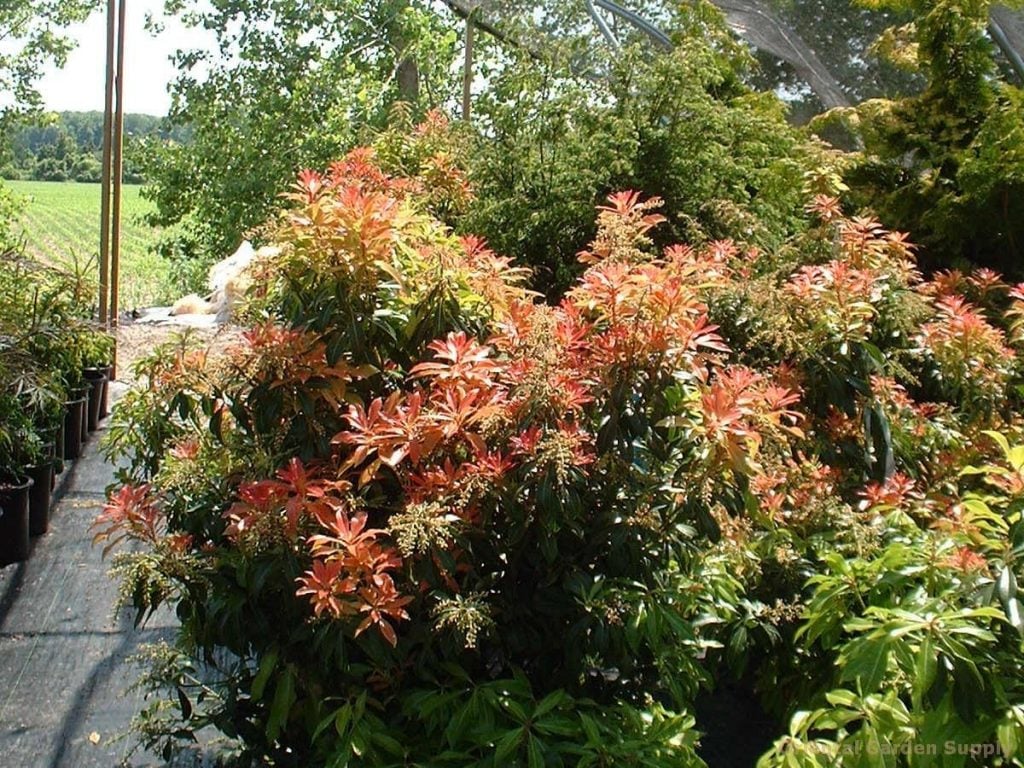
Hardiness refers to how easily the plant can grow in different weather conditions. The Royal Horticultural Society has given forest flame plants a hardiness rating of H5. This means that the plant can pull through severe winters even at a minimum temperature range of -15 to -10 degree Celsius. This plant can be grown across most regions of the UK. However, if they are grown in pots, then they might have an increased risk of damage to foliage, especially during harsh winters. They might not be ideal for growing in some Northern regions in the UK, although, with some extra care, these forest flame plants can grow well anywhere!
6. Watering Tips to Grow the Forest Flame Plant
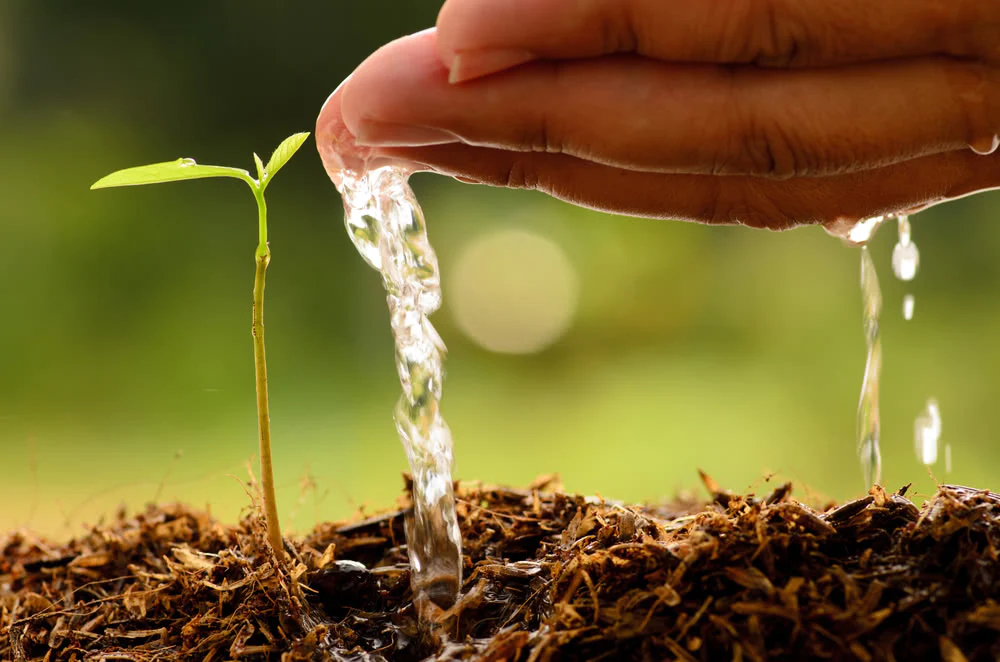
When they are young, you need to water them regularly around every week, once or twice, depending on the weather. But after they get older, you don’t have to water them even! But for ideal growth, if there are dry spells or hot summers in the UK, they will grow well if you water regularly. If you water them too much, the plant might get waterlogged, and one easy way to recognize that is to check for the dropping of the leaves. Even if you water very less, the same thing will happen, so you need to understand the plant’s watering needs in different seasons and take care of it accordingly.
7. Sunlight is Required or Not?
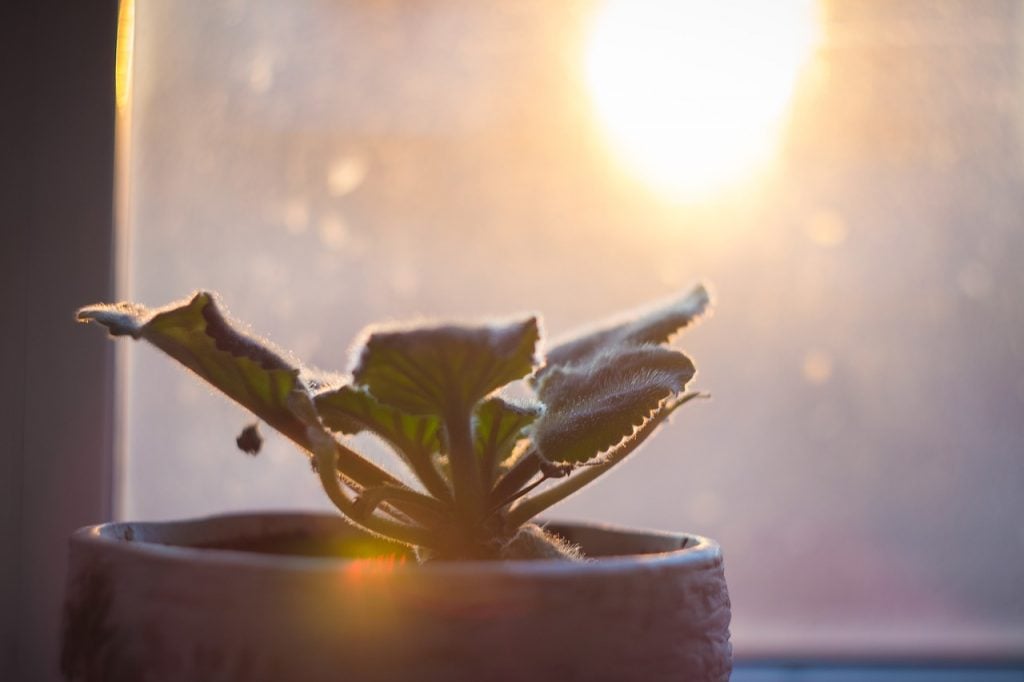
These adaptable plants can grow in full sunlight or partial shade. But it would be best for their growth if you still keep them sheltered in a place where they will receive sunlight. These plants prefer the morning sun, and in the afternoon, they might prefer shade. Their growth will not be healthy if they are not exposed to sunlight at all. These plants might need around 6 hours of sunlight every day. So the answer is yes, they absolutely need sunlight to thrive!
8. Beware of These Diseases and Use These Preventive Measures
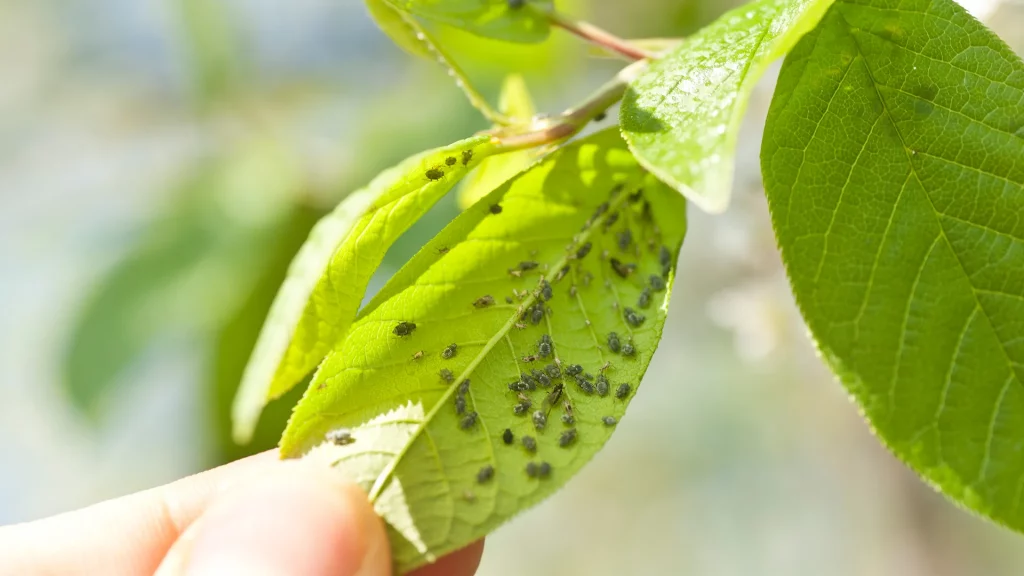
Pieris ‘forest flame’ is fairly easy to grow if you cater to its needs. Neglecting the Pieris forest flame plant can put the health of the plant at serious risk. The following are the pests that the plant might be affected by.
Pieris Lacebug
You may notice the bugs directly, or you may see signs of their activity: bleached yellow leaves, leaf drops, and brown spots on the underside of the leaves. There is a selection of pesticides available that can help. Be careful not to spray pesticides onto flowering plants, as this can cause harm to bees and pollinators that visit.
Phytophthora
It is a blight and results in the rotting of the roots of the plant. Once the roots are blighted, you have to destroy the plant and replace the soil to prevent further spread. Make sure your soil is well-drained because overly moist soil is a high-risk factor for Phytophthora.
Fungal Leaf Spot
This causes spots or blemishes on the leaf. Moisture remaining on the leaf is a risk factor for leaf spot infection. Care must be taken to water the soil rather than the plants.
9. Pruning: How To Trim Them the Right Way
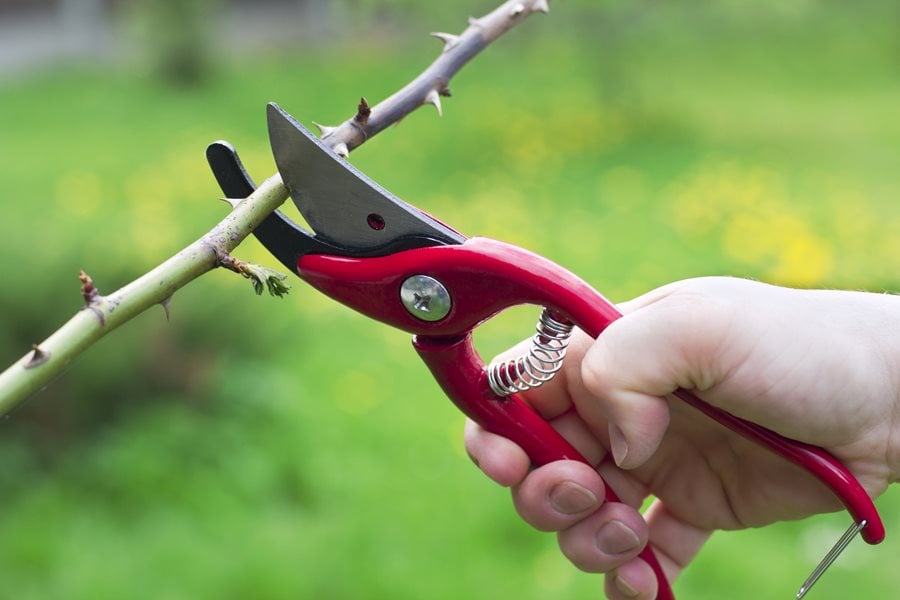
Using common pruning tools, you can prune these plants before they start growing again in winter. This way, you can avoid any damage that winters might cause, such as damaging newer shoots or pruning scars being very visible during spring. It is better to start pruning these plants just before they start flowering. You can prune about one-third of the total wood. Make sure to prune out any of the damaged, diseased or dead branches. Thin out any overcrowded shoots and badly positioned ones.
10. Know Its Size Before You Plant!
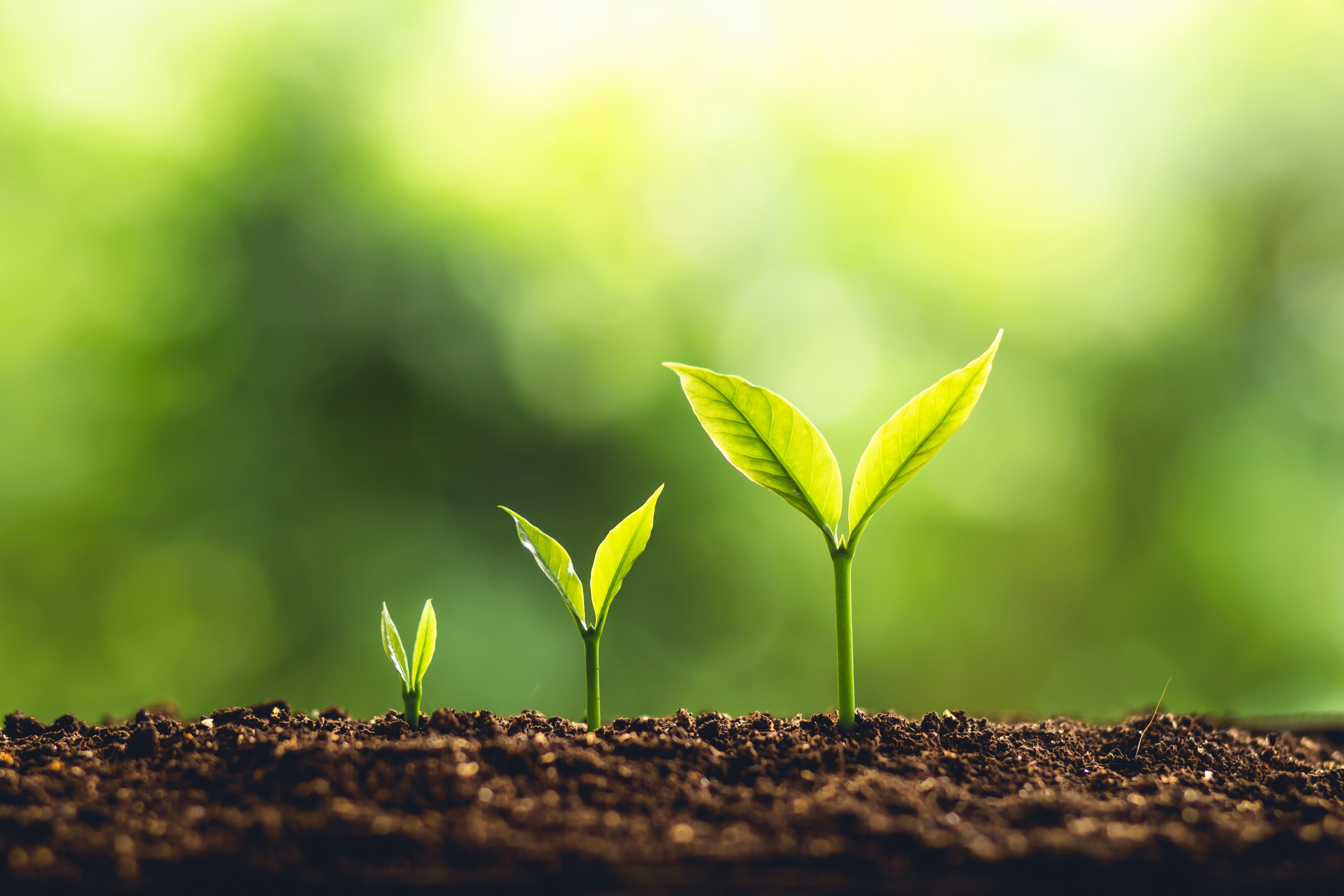
The forest flame flower is one of the biggest Pieris plants. These plants might grow up to 2 to 3 meters approximately, and they will have a spread of 1.2 to 1.6 meters. These dimensions might not be suitable for a smaller garden as this plant alone might take up a considerable amount of space. You may prefer a smaller variety if you’re working with a more compact garden. If you are trying smaller varieties, you can grow several of them in your garden, which might be another benefit.
List of Pieris Varieties: Awarded Garden Merit by Royal Horticultural Society
1. Pieris japonica ‘Bonfire’
This is a relatively small flowering plant which grows to a maximum of 1 meter. The foliage is dark red when younger but slowly turns to a deeper shade of green as they get older. It produces beautiful dark pink flowers in winter and pale pink ones in spring.
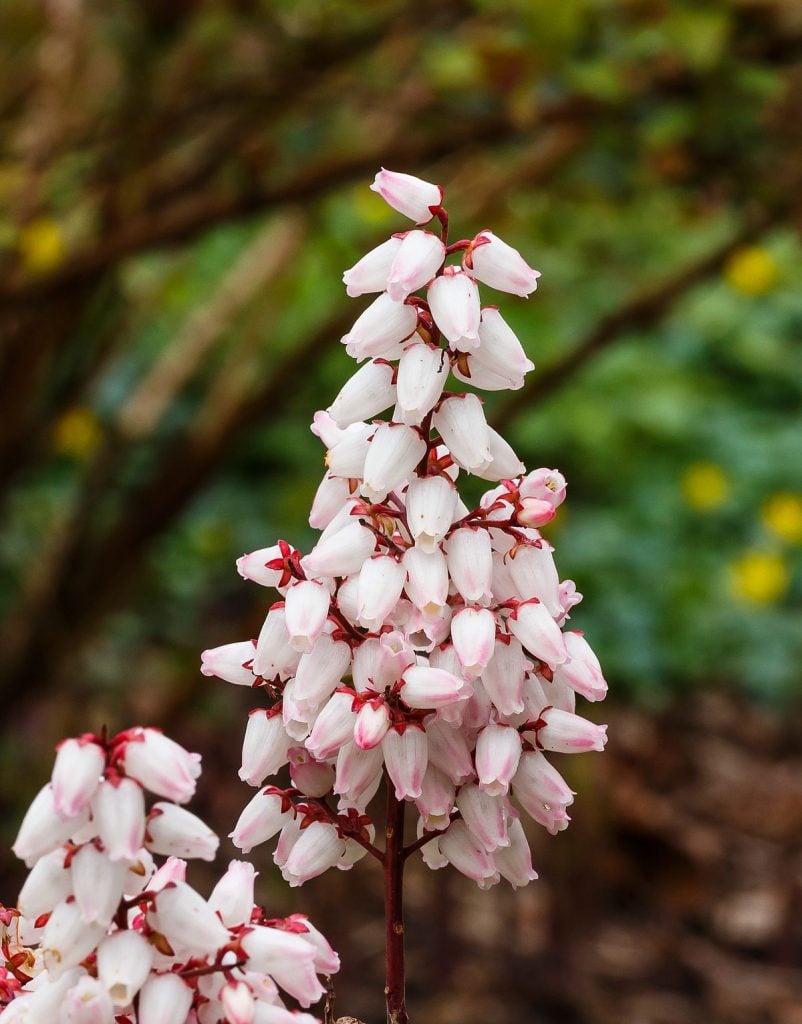
2. Pieris japonica ‘Carnaval’
These plants are even smaller as they grow up to 1.5 meters in height and only 1 meter in spread and so they might be ideal for smaller gardens. It has beautiful leaves that are also a deep shade of red, and the edges of these leaves are pink. They might produce smaller flowers in spring that are white in colour.
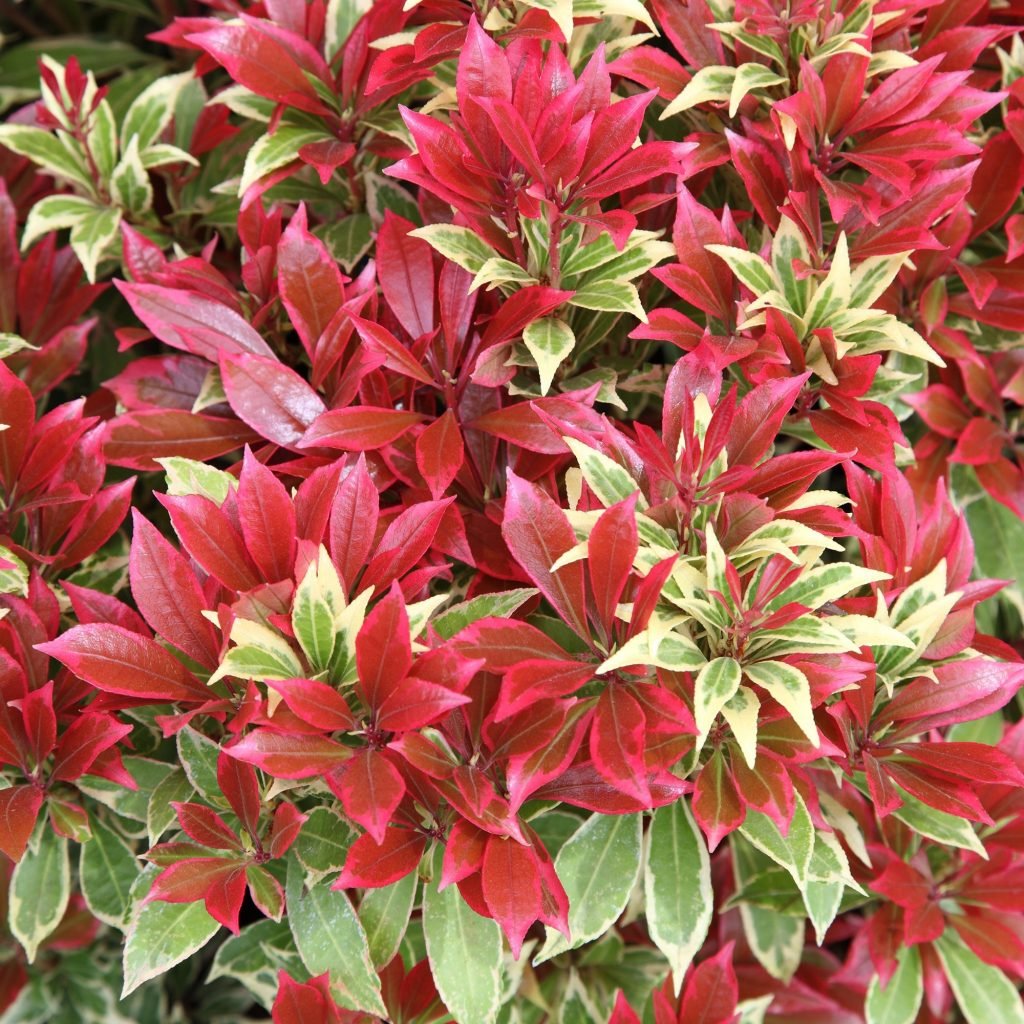
3. Pieris japonica ‘Cavatine’
This plant is even smaller as it grows up to a height of 50 cm and has a spread of a maximum of 1 meter. This is the main reason why they can grow well in deeper pots or containers. These, like some of the others in the variety, also produce white flowers.
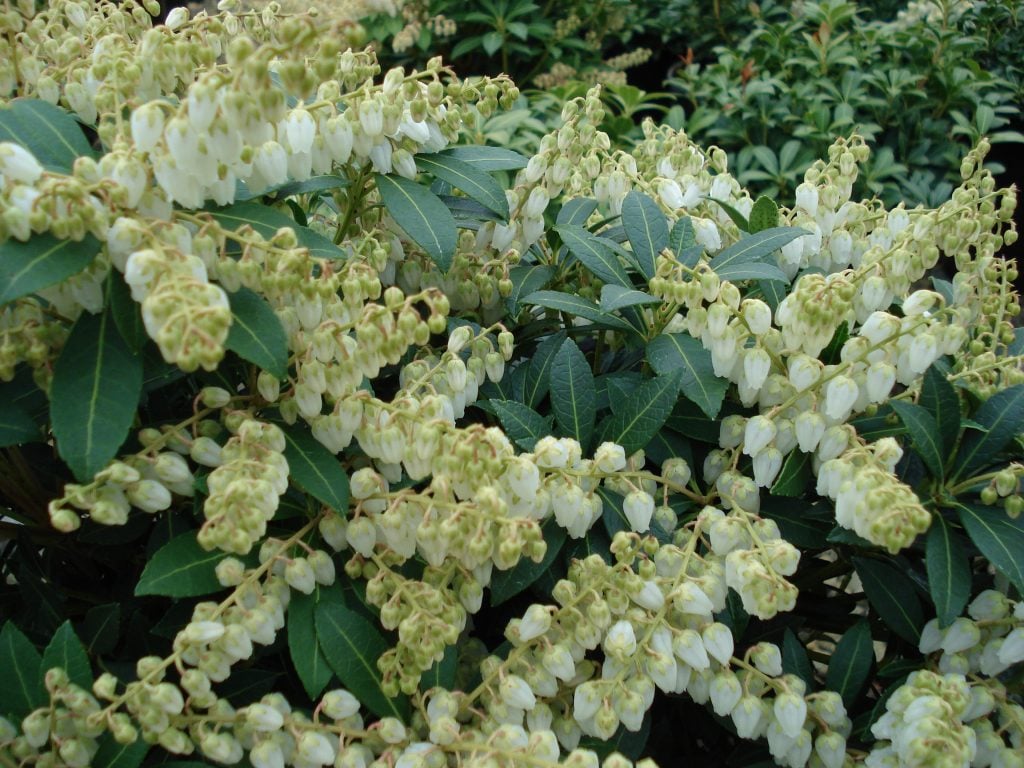
4. Pieris japonica ‘Debutante’
This is also a compact plant as it might grow around 0.5 to 1 meter in both height and breadth. This is a small shrub and will produce white flowers in the spring.
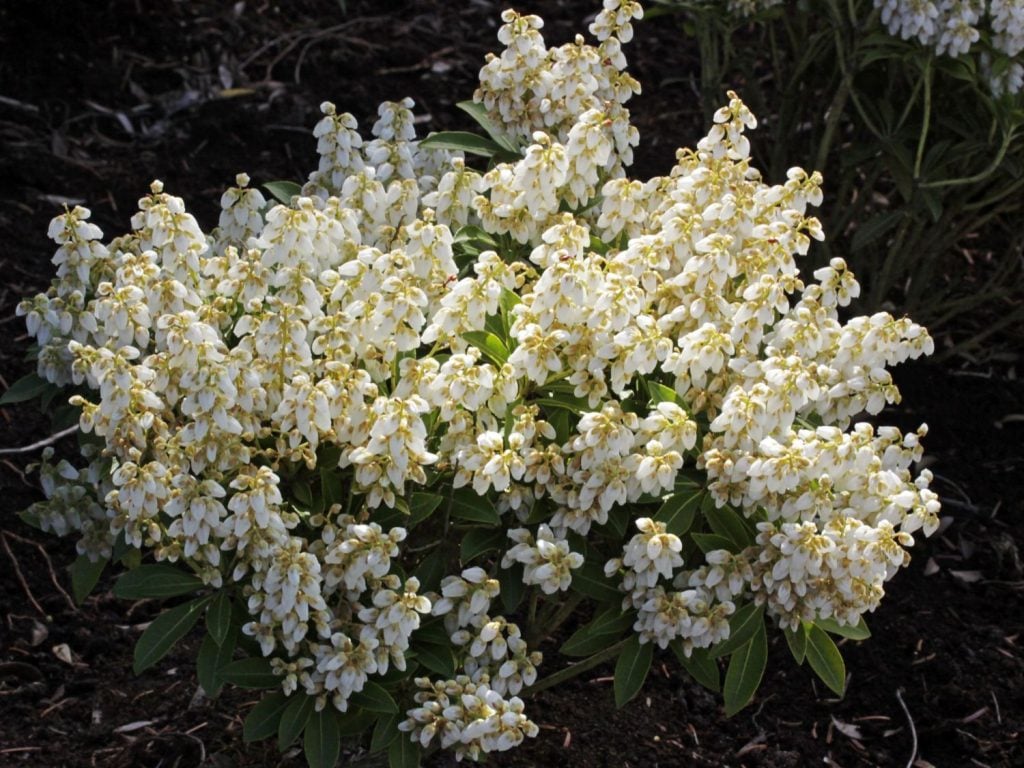
5. Pieris japonica ‘Prelude’
This variety is also compact as it can grow up to 0.5 to 1 meter in height and spread just like the Debutante variety. The leaves are pink in colour when they are younger, but they turn into a shade of green. This plant will produce white flowers when in spring.
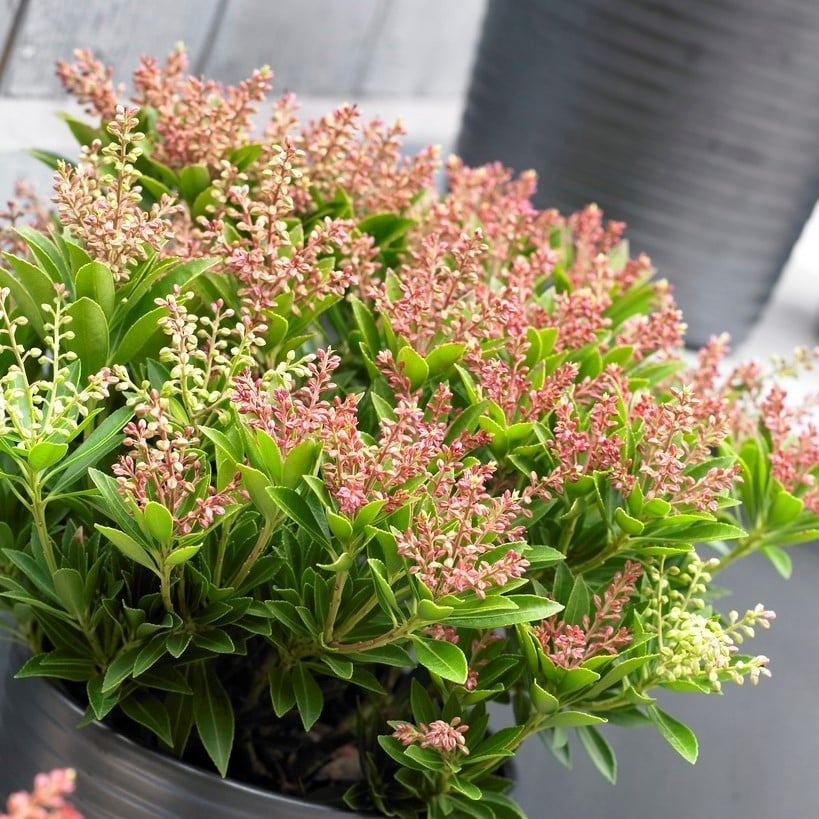
Which Variety of Forest Flame Plant to Choose?
Pieris, commonly called the forest flame plant, is known for its bright red and pink flowers. They are not that difficult to grow, and once they establish themselves, they will continue to thrive for several years. There are several varieties which grow up to different sizes and thrive in different types of soils. They are susceptible to different kinds of pests, but they can easily be taken care of. Their hardiness rating is H5 according to UK levels, so they can be grown in almost all the regions of the UK comfortably.
So it is easy for you to choose the ones that will grow best in your garden. Since they propagate within a month and also need pruning occasionally, this plant is a great option for you to consider growing. Overall, they add great aesthetic value to your garden with their striking flowers and bright foliage!
Frequently Asked Questions
How to Grow Forest Flame Plants in Containers?
Pieris plants are shrubs; even if they are compact and only under optimal growing conditions, they will produce bright red flowers. So you will need to choose a reasonably large container. It is ideal to choose a sturdy and heavy pot. The pot should have good drainage at the base. Prepare your new container with a little ericaceous compost mix at the base. These plants grow well in acidic, moderately fertile, humus-rich soil.
Is There Any Drawback to Growing Forest Flame Plants?
This plant is a bee magnet, and its pollen-rich flowers will attract plenty of bees to your garden. This can be inconvenient, but it is nothing to be worried about. Bee populations are in decline, and they especially struggle in urban environments. So growing these plants will be helpful for bees while making your garden look aesthetic! Other than that, these are plants that can be easily grown and taken care of.
Are There Any Early Signs to Look Out For to Know Whether My Plant Is Not Doing Well?
There are some signs to look out for that indicate that your plant is going through a tough time. Yellow and pale leaves are sometimes caused by too much direct sun. The plant should be moved to a more shaded spot. It can be a sign that the soil is not acidic enough. Brown spots are commonly a sign of a fungal issue. This happens when there is overcrowding, poor airflow and waterlogged conditions. Poor growth or a general lack of flowering could be a sign that your plant is not happy in its current location.

